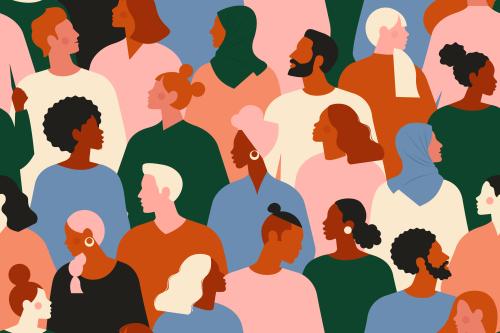If you want more content like this, subscribe to our newsletter.
This week in Class Notes:
-
- Immigrants experience higher rates of upward intergenerational mobility than their U.S.-born peers – in part because they are more likely to move to opportunity.
- The minimum wage expansion of 1967 led to a significant decline in the racial earnings gap between Black and white workers.
- School shootings have long-lasting negative effects on educational and employment outcomes.
- This week’s top chart shows that the middle class has experienced slow income growth and seen its share of aggregate income drop.
- Jason Furman argues that Biden’s stimulus plan should be contingent on the pace of the recovery in this week’s choice op-ed.
- Check out our latest piece on key policy priorities for addressing challenges that affect Black boys and men.
- For your calendar: Watch upcoming events on workforce development policies, economic impact payments, and the role of race, labor markets and education in building an equitable recovery.
Immigrants experience higher rates of upward intergenerational mobility than their US-born peers
How do mobility rates for immigrants compare to those for U.S.-born Americans? Ran Abramitzky and his co–authors study intergenerational income mobility among immigrant families over the past 130 years to answer this question. Using Census data as well as administrative data made public by Opportunity Insights, they match the incomes of immigrant fathers and their sons, and compare them to U.S.-born father-son pairs. They analyze three cohorts of immigrants. The first two cohorts track first-generation immigrants and their children from the 1880 and 1910 censuses. The third cohort includes children of immigrants born around 1980. In all three cohorts, the authors find that children of immigrants are more upwardly mobile than children of U.S.-born parents. This is especially true for children from relatively poor families: children of immigrants with parents in the 25th percentile have a similar expected rank in the income distribution when they grow up as children of the U.S.-born with parents who ranked about 15-20 percentiles higher. The authors find that geographical mobility plays an important role here: immigrant parents were more likely to move to areas offering better economic opportunities for their children.
The minimum wage expansion of 1967 led to a significant decline in the racial earnings gap between Black and white workers
Average annual earnings are 25% lower for Black workers than for white workers. This gap has been persistent over the past 70 years, falling significantly only once – during the late 1960s and early 1970s. What caused this reduction in the earnings gap? To answer this question, Ellora Derenoncourt and Claire Montialoux study the effects of the Fair Labor Standards Act of 1966, which extended the federal minimum wage to several disproportionately Black employment sectors including agriculture, hotels, restaurants, and entertainment. Using BLS and CPS data, they find that the minimum wage expansion of 1967 explains over 20% of the decline in the racial earnings gap between 1965 and 1980. They also find that the policy did not have large adverse employment effects on either Black or white workers. Two distinct mechanisms were at work. First, the wage extension increased the average earnings for all workers in the newly covered industries, which were disproportionately Black. Second, the earnings gains within those newly covered industries were significantly larger for Black workers than for their white peers.
School shootings have long-lasting negative effects on educational and employment outcomes
Two weeks ago, we wrote about the negative effects of exposure to police violence on the academic and psychological well-being of students. In a related study, Marika Cabral and her co–authors study the effects of another kind of violent act, namely school shootings, on students’ educational and economic outcomes. Using administrative microdata from public schools as well as the Washington Post school shootings database, Cabral et al examine the effects of the 33 school shootings that occurred in Texas public schools between 1995 and 2016. The authors find that exposure to shootings negatively affected educational outcomes in both the short run and the long run. Exposure to a shooting led to a 28% increase in the likelihood of being chronically absent as well as a 125% increase in the likelihood of repeating a grade in the two years following the shooting. In the long run, shootings led to a decrease in both high school and college graduation rates among exposed students. The shootings also impact employment outcomes: exposed students display lower employment rates and lower average earnings than their peers at ages 24 through 26.
Top chart: The middle class has experienced slow income growth and seen its share of aggregate income drop
This week’s top chart shows that since 1970, middle class households have experienced slower income growth than upper and lower class households. The share of aggregate income held by the middle class has dropped significantly from 62% to 43% while the upper class now takes in nearly half of all household income. (Note that Pew define middle class differently to us – but that’s another story).
 Source: Pew Research Center
Source: Pew Research Center
Choice opinion: Biden’s stimulus plan should be contingent on the pace of the recovery
“Making federal relief contingent on economic conditions wouldn’t only help tailor aid to the pace of the recovery; it would be an essential step to building back better. New contingencies could be preserved as formulas to ensure that relief and economic support are automatically delivered whenever and wherever needed. These measures would also help ensure that assistance phases out when it’s no longer needed…By bolstering the fiscal response, Mr. Biden will boost the recovery and take a big step toward reducing the severity of future recessions too,” writes Jason Furman.
Self-promotion: Key policy priorities for addressing challenges that affect Black boys and men
The intersection of systemic racism and gender means Black boys and men face a unique set of challenges in American society. These challenges call for nothing less than bold and widespread policy reforms, or “a New Deal for Black men,” as Camille Busette calls it. Summarizing our event on this issue, Ashleigh Maciolek identifies six key areas that policymakers should prioritize, including the criminal justice system, the education system, and the labor market. Specific proposals include making federal student loans available to those with past felony convictions; promoting mentorship programs that provide young Black boys with access to Black male role models; and reparations to provide restitution for centuries of systemic racism.
For your calendar: workforce development policies, economic impact payments, and building an equitable pandemic recovery
Rethinking workforce development: Policies to protect workers and families
-
- Tuesday, February 16, 2021 10:30 AM – 12:00 PM EST
Economic impact payments: Uses, payment methods, and costs to recipients
-
- Wednesday, February 17, 2021 3:00 PM – 4:00 PM EST
The role of race, labor markets, and education in building an equitable recovery
-
- Wednesday, February 17, 2021 4:00 PM – 5:00 PM EST
The Brookings Institution is committed to quality, independence, and impact.
We are supported by a diverse array of funders. In line with our values and policies, each Brookings publication represents the sole views of its author(s).








Commentary
Class Notes: Long-term effects of school shootings, the racial earnings gap, and more
February 11, 2021